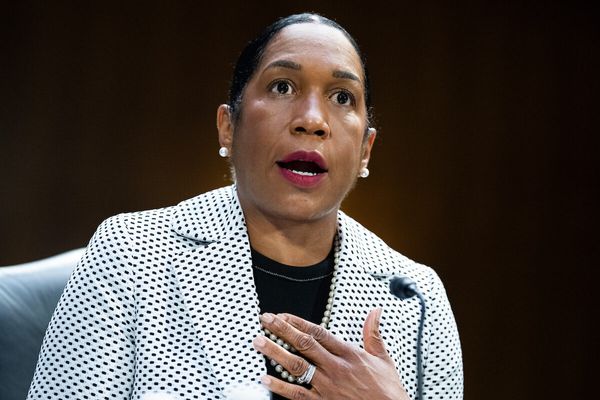
The question of why the government diverged from the suggestions of its scientific advisers on key pandemic policies has long been a source of debate. Why did Boris Johnson proudly boast of shaking hands “with everybody” at a hospital with known coronavirus patients on the same day in early March 2020 when the Scientific Advisory Group for Emergencies (Sage) warned against doing so? Why did the government fail to take action in the autumn of 2020, when cases were rising and Sage recommended a circuit-breaker lockdown? Why were primary schoolchildren sent back to mix in the classroom for just a single day in January 2021? Could it be that ministers simply didn’t understand the science? The recent leak of 100,000 WhatsApp messages has shed some light on the issue.
One conversation emerging from the leak, between Johnson, his chief political adviser, Dominic Cummings, and his scientific advisers, presents a particularly egregious example of scientific illiteracy.
After reading a Financial Times article, Johnson mistakes a case fatality ratio (CFR, the number of people who die of Covid-19 divided by the number of people who test positive) of 0.04, or equivalently 4%, for one of 0.04%, or 0.0004 – a hundred times smaller. His subsequent calculations leave him baffled as to why the UK has already experienced more deaths than his incorrect figure would suggest – even if everyone in the country were to be infected. The chief scientific adviser, Patrick Vallance, patiently explains the difference “It seems that the FT figure is 0.04 (ie 4% not 0.04%)”, to which Johnson replies: “Eh? So what is 0.04 if it is not a percentage?”
While it is clear that Johnson is conversing informally with his advisers in private, the case fatality ratio he plugs into his calculation is the wrong number to use to work out the expected number of deaths. Instead we need the infection fatality ratio – the number of people who die divided by the number of infections. Since the true number of infection is usually far larger than the number of people who test positive (especially at the beginning of the pandemic when testing was scarcer), the CFR tends to overestimate the IFR. At first glance the difference is subtle, and failure to spot it might be forgivable in someone naive to these sorts of discussions, but this was August 2020. That the prime minister was still making these sorts of mistakes is indicative of his lack of engagement with the relevant science.
In another of the WhatsApp exchanges, Johnson posts a Spectator article suggesting that herd immunity might provide the way out of the pandemic for the UK. England’s chief medical officer, Chris Whitty, quickly refutes this piece, explaining that it’s not clear that infection provides the long-lasting immunity that would be required for herd immunity.
Johnson persists by suggesting that those over 65 could be offered a choice between shielding or living with the risk of being infected with Covid-19. To back up his assertion he claims, “If you are over 65 your risk of dying from Covid is probably as big as your risk of falling down stairs. And we don’t stop older people from using stairs.”
His made-up statistic is illustrative of Johnson’s complete misunderstanding of the level of risk posed by Covid-19 to elderly people. The five-year average death rate for people aged over 65 falling down the stairs is just under 550 a year. More than 60,000 people aged over 65 died of Covid-19 in 2020 in England and Wales alone, despite the interventions that were taken.
Again, Whitty has to step in to explain the fundamental impossibility of keeping older, more vulnerable individuals completely isolated from infectious individuals: “Most of those who die in that situation will not have chosen to take the risk.” Despite his scientific advisers’ reminders that attempting to achieve herd immunity had not been a successful strategy during the first wave of the pandemic and would have probably led to the overwhelming of the NHS, the idea seems to have lodged in Johnson’s head.
In September 2020, Sage suggested a two-week “circuit breaker” lockdown to save lives and potentially prevent economically damaging longer restrictions later on. Instead, Johnson invited three fringe scientists to speak at Downing Street – one of whom was a proponent of the widely debunked Great Barrington Declaration, which advocated Johnson’s pet policy of shielding vulnerable people to achieve herd immunity. As a result, the proposed mitigations were tabled for more than a month. Despite the introduction of a tier system, cases rose until a lockdown was inevitably introduced in England in early November.
We saw the first hard evidence of Johnson’s scientific frailties in WhatsApp messages from around this time leaked by Dominic Cummings. In the messages, Johnson notes (perhaps as his idea of a joke) that the average age of death with Covid-19 is above life expectancy and concludes: “So get Covid and live longer.” But life expectancy increases as you age. The typically quoted mean figures of 79 for men and 83 for women are life expectancies “from birth”. Once you make it to 80, you expect to live another nine or 10 years. People who died from Covid-19 lost about a decade of life on average. Perhaps most alarming is that Johnson bafflingly suggests a causal relationship between dying of Covid-19 and living longer. How could that possibly work?
The previously private scientific blunderings of our former PM demonstrate similar ineptitude to those very public missteps of his US counterpart, Donald Trump, who suggested that injecting patients with disinfectants might help treat coronavirus. But it could have been a very different story.
Germany, for example, went into the pandemic with a detailed national pandemic plan. Its politicians understood, from the beginning, the importance of ramping up testing capacity and of containing cases of the disease. You only need look Angela Merkel – a scientifically literate leader who was able not just to understand but to explain the intricacies of relevant scientific principles to her people – to see how different it could have been.
Kit Yates is director of the Centre for Mathematical Biology at the University of Bath and author of The Maths of Life and Death
Do you have an opinion on the issues raised in this article? If you would like to submit a letter of up to 300 words to be considered for publication, email it to us at guardian.letters@theguardian.com







